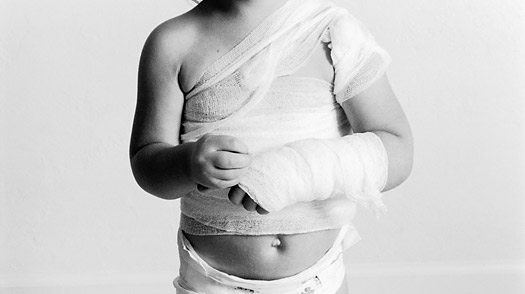
Children in highly developed countries suffer abuse and neglect much more often than is reported by official child-protective agencies, according to the findings of the first in a comprehensive series of reports on child maltreatment, published Dec. 2 in the British medical journal The Lancet.
Based on a review of research conducted on child abuse between 2000 and June of this year, researchers estimate that 4% to 16% of children are physically abused each year in high-income nations, including the United States, United Kingdom, Australia and Canada. As many as 15% are neglected, and up to 10% of girls and 5% of boys suffer severe sexual abuse; many more are victims of other sexual injury. Yet researchers say that as few as 1 in 10 of those instances of abuse are actually confirmed by social-service agencies — and that measuring the exact scope of the problem is nearly impossible.
The issue lies in the delicate nature of the crimes — and the consequences of intervention. Many cases of abuse are rife with potential for long-term harm of the child, whether or not the assault is reported. The decision to report is rarely clear-cut, says Theresa Costello, director of the National Resource Center for Child Protective Services, who was not involved with the new research. “Professionals want to advocate for their clients, but they also know the reality of the public child-welfare system,” she says. “There is a natural professional dilemma when you see a kid and you think, ‘I should make a report,’ but you’re not sure you want to subject that child to the system.”
Indeed, the second study in the Lancet analysis, citing previous research, reveals that physicians reported only 6% of children’s injury cases to protective services, even though they suspected the injury was a result of abuse 10% of the time. Further, researchers say that many more cases of maltreatment — particularly of sexual abuse — are never even suspected, and the victimized children never come forward to report the assaults.
“The official statistics agencies produce are conservative estimates of probably the lowest level of child maltreatment,” says Dr. Cathy Spatz Widom, a psychology professor at John Jay College of Criminal Justice, who specializes in the long-term effects of child abuse and is a lead author on one of the Lancet studies.
Those numbers, researchers say, may now be on the rise. Historically, economic hardship has often corresponded with increases in child abuse, says Dr. Carole Jenny, a professor of pediatrics at Brown University and an expert in identifying and treating victims of child abuse, who authored a commentary in The Lancet. In the past six months, Jenny says she has seen increases in rates of maltreatment and heard similar reports from her colleagues. “I imagine that as the economy worsens, [child-abuse specialists are] only going to be more and more busy,” she says, adding that the recession will likely mean less funding for already strained social services. “As the pressures on families are increasing markedly, the amount of help available goes down,” she says.
The new research underscores the fact that the most common type of child abuse in developed countries — simple neglect — is often the least publicized. The Lancet analysis finds that neglect is the No. 1 category of maltreatment reported by child-protective services. “We have paid much more attention to physical and sexual abuse. We have called people’s attention to it. Even though neglect is the largest portion of cases, it’s under everybody’s radar,” Widom says. “And yet we know that neglected children are at as high a risk as physically abused kids for becoming violent offenders, for example, or having low reading ability.”
Widom points to years of past research linking early childhood abuse to an increased possibility of long-term behavioral and psychological problems, ranging from low educational achievement to criminal behavior, risky sexual practices and even increased chance of obesity. “Child maltreatment has long-lasting effects across multiple domains of functioning. It’s not just in childhood. It lasts into adulthood, and we are not really thinking about these long-term consequences, and we’re not planning for them,” she says.
Yet there is no completely objective test for the presence of abuse. Identifying victimized children is often a subjective process, and caregivers may be wary of levying false accusations. Self-reports of abuse are frequently flawed and inaccurate as well, says Widom; they often produce the largest estimates of abuse incidence, but their definitions of maltreatment are overly broad. Even when children of abuse are correctly identified, not all caregivers know how to ensure their proper treatment. “There’s no gold standard,” Widom says.
There is an effort afoot to rectify that problem. Brown University’s Jenny is one of roughly 250 pediatricians across the U.S. whose specialty is the identification and prevention of child abuse, and the field is gaining momentum — and standardization. By 2012, a three-year postresidency fellowship will be required of all new pediatricians who wish to specialize in child abuse. And the National Association of Children’s Hospitals has advocated requiring all children’s medical institutions to have a child-abuse specialist on staff.
The ultimate goal is to prevent abuse in the first place, says Widom, and to protect the well-being of children who have been victimized. “It would be wrong to assume that all maltreated children are going to turn out to have all of these problems,” she says.
See pictures from an X-ray studio.
See TIME’s Pictures of the Week.